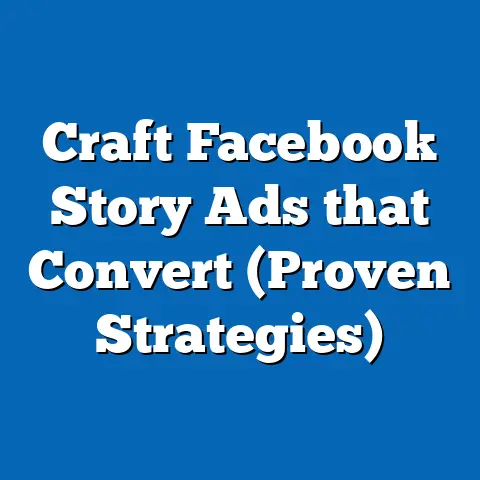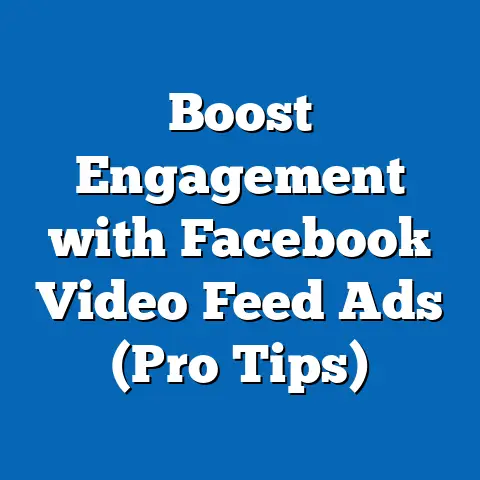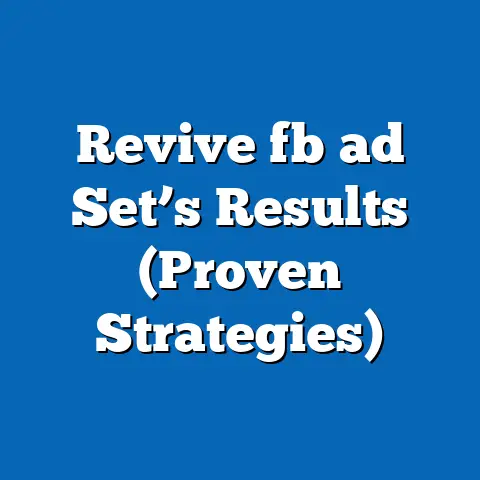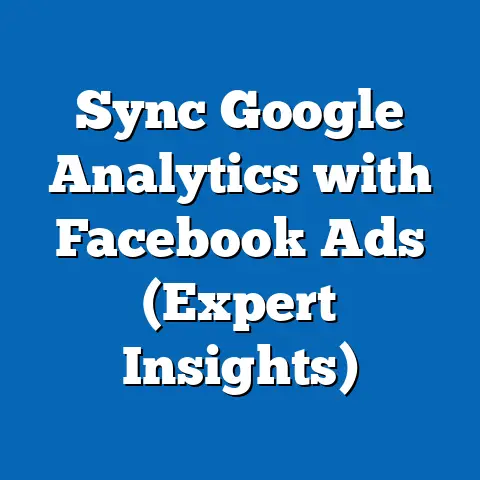Unleashing Nike’s Facebook Ads Strategy (Game-Changing Insights)
Nike. The swoosh. It’s more than just a logo; it’s a symbol of aspiration, performance, and pushing your limits. From humble beginnings, Nike has transcended the sportswear industry, becoming a global icon synonymous with innovation and athletic achievement. But their success isn’t just about crafting cutting-edge sneakers and apparel. It’s about crafting compelling stories and connecting with audiences on a deeply emotional level. And a significant part of that connection happens on Facebook.
Facebook, with its billions of active users, presents a unique opportunity for brands to reach a diverse and engaged audience. But simply having a presence isn’t enough. It’s about understanding the platform, leveraging its tools, and crafting a strategy that resonates with your target demographic. And that’s where Nike truly shines.
Over the years, I’ve analyzed countless Facebook ad campaigns, and Nike’s consistently stands out. Their approach isn’t just about selling products; it’s about inspiring movement, celebrating athletes of all levels, and building a community around a shared passion. In this article, I’m going to dissect Nike’s Facebook Ads strategy, pulling back the curtain to reveal the game-changing insights that have propelled them to the top. We’ll delve into their brand identity, target audience segmentation, creative ad formats, community building efforts, and data-driven decision-making. By understanding these elements, you can glean valuable lessons and apply them to your own Facebook advertising endeavors, regardless of your industry or budget. So, lace up your virtual sneakers, and let’s dive in!
Understanding Nike’s Brand Identity
Nike’s brand identity is the bedrock upon which all their marketing efforts are built. It’s not just about selling shoes; it’s about selling a lifestyle. Their core values – innovation, performance, and inspiration – are woven into every fiber of their brand narrative.
Innovation is evident in their product development, constantly pushing the boundaries of athletic gear. Performance is showcased through their endorsements of elite athletes and their commitment to helping athletes achieve their peak potential. But perhaps the most powerful element is inspiration. Nike inspires people to move, to challenge themselves, and to believe in their ability to achieve greatness, regardless of their skill level. “Just Do It” isn’t just a slogan; it’s a call to action, a mantra that resonates with anyone striving for improvement.
How does this translate to their Facebook advertising? It’s all about authenticity. Nike’s ads rarely feel like blatant sales pitches. Instead, they tell stories. They showcase athletes overcoming obstacles, achieving personal bests, and inspiring others along the way. I remember one particular campaign featuring a young girl with disabilities who dreamed of playing basketball. The ad wasn’t about selling shoes; it was about celebrating her determination and showcasing Nike’s commitment to inclusivity. It was powerful, emotional, and deeply resonant.
Nike’s branding also influences the visual elements of their ads. Their use of dynamic imagery, vibrant colors, and bold typography reinforces their energetic and aspirational brand image. Even the subtle placement of the swoosh logo is a constant reminder of their commitment to quality and performance. The key takeaway here is that your brand identity should be the guiding principle behind all your advertising efforts. It’s what differentiates you from the competition and allows you to connect with your audience on a deeper level.
Target Audience and Segmentation
Understanding your target audience is paramount to any successful advertising campaign, and Nike is a master of segmentation. They don’t just target “athletes”; they target specific types of athletes with tailored messaging.
Nike’s target audience on Facebook spans a wide range of demographics, psychographics, and behavioral traits. They target individuals interested in sports, fitness, and healthy living. They consider age, gender, location, income, and education level to create detailed customer profiles. But it goes much deeper than that.
Psychographically, they target individuals who are motivated, driven, and passionate about achieving their goals. They understand the values and aspirations of their audience and craft messaging that resonates with their beliefs. Behaviorally, they target individuals who are active on social media, engage with sports-related content, and have a history of purchasing athletic gear.
Nike leverages Facebook’s powerful targeting tools to reach these specific segments effectively. They utilize custom audiences, created by uploading customer lists or website visitor data, to retarget individuals who have previously interacted with their brand. They also use lookalike audiences, which allows them to reach new users who share similar characteristics with their existing customers. And of course, they utilize interest-based targeting, targeting individuals who have expressed an interest in specific sports, athletes, or fitness activities.
I once saw a Nike ad campaign specifically targeting marathon runners. The ad featured a new line of running shoes designed for optimal performance during long-distance races. The messaging was tailored to the unique needs of marathon runners, highlighting features like cushioning, support, and breathability. It was a perfect example of how Nike uses segmentation to reach the right audience with the right message at the right time.
The insight here is that you need to understand your audience intimately. Don’t just rely on broad demographics; delve into their psychographics and behavioral traits. Use Facebook’s targeting tools to reach specific segments with tailored content that speaks directly to their needs and aspirations.
Creative Ad Formats and Content Strategy
Nike’s Facebook ads are rarely boring. They understand the importance of capturing attention and engaging users with visually appealing and emotionally resonant content. They utilize a variety of ad formats to achieve this, including carousel ads, video ads, and collection ads.
Carousel ads allow Nike to showcase multiple products or features in a single ad unit. This is particularly effective for highlighting different styles of shoes or apparel. Video ads are used to tell compelling stories, showcase athletes in action, and create emotional connections with the audience. Collection ads provide a seamless shopping experience, allowing users to browse and purchase products directly from the ad.
But the real secret to Nike’s success lies in their content strategy, which is heavily reliant on storytelling. They don’t just show products; they show the impact those products have on people’s lives. They tell stories of athletes overcoming adversity, achieving personal bests, and inspiring others to do the same.
I remember a particularly impactful video ad featuring LeBron James. The ad wasn’t about selling basketball shoes; it was about celebrating his journey from a young boy with a dream to a global icon. It was a powerful and emotional story that resonated with viewers of all ages and backgrounds.
Nike also leverages user-generated content and influencer partnerships to enhance authenticity and engagement. They often feature photos and videos of real people using their products, showcasing the versatility and appeal of their brand. They also partner with influencers who align with their brand values to create authentic and engaging content that resonates with their followers.
The key takeaway here is that your ad creative should be visually appealing, emotionally resonant, and authentic. Don’t just focus on selling products; focus on telling stories that connect with your audience on a deeper level. Leverage a variety of ad formats to showcase your products and engage users in different ways. And consider incorporating user-generated content and influencer partnerships to enhance authenticity and build trust.
Engagement and Community Building
Nike understands that Facebook is more than just an advertising platform; it’s a community building tool. They use Facebook to foster a sense of community among their fans and customers, creating a space where people can connect, share their experiences, and inspire each other.
They achieve this through a variety of initiatives, including community events, challenges, and interactive content. They often host virtual events on Facebook Live, featuring athletes, trainers, and industry experts. They also create challenges that encourage users to participate in fitness activities and share their progress on social media. And they create interactive content, such as polls, quizzes, and contests, to engage users and encourage them to interact with their brand.
Engagement is a crucial element of Nike’s advertising strategy. They actively respond to comments, shares, and reactions, creating a two-way conversation with their audience. They address questions, provide support, and acknowledge feedback, demonstrating that they value their customers’ opinions.
I once saw a Nike Facebook post asking users to share their favorite workout routines. The post generated thousands of comments, with people sharing their tips, tricks, and motivational stories. Nike actively responded to these comments, offering encouragement, providing advice, and fostering a sense of community among its followers.
Creating a two-way conversation with your audience through Facebook is essential for building brand loyalty. It shows that you care about your customers and that you’re invested in their success. It also provides valuable feedback that can be used to improve your products and services.
The key takeaway here is that you should use Facebook to foster a sense of community among your fans and customers. Create initiatives that encourage engagement, respond to comments and feedback, and build a two-way conversation with your audience.
Data-Driven Decision Making
Nike doesn’t just rely on gut feelings or intuition when it comes to their Facebook ads strategy. They utilize data analytics to inform their decisions, optimize their campaigns, and maximize their ROI.
They understand the importance of A/B testing, performance metrics, and insights gained from Facebook analytics. They constantly test different ad creatives, targeting options, and bidding strategies to identify what works best. They track key performance indicators (KPIs) such as reach, impressions, clicks, conversions, and cost per acquisition (CPA) to measure the effectiveness of their campaigns. And they use Facebook analytics to gain insights into their audience demographics, interests, and behaviors.
I remember reading a case study about how Nike used A/B testing to optimize their Facebook ad creative. They tested two different versions of a video ad, one featuring a celebrity athlete and the other featuring a regular person. The ad featuring the regular person generated significantly higher engagement and conversions, leading Nike to shift their focus towards featuring relatable individuals in their ads.
Nike has also adapted its campaigns based on data-driven insights and consumer feedback. They constantly monitor social media for mentions of their brand and use this feedback to improve their products, services, and advertising messaging.
The role of continuous optimization is paramount to maximizing ad performance and ROI. Don’t just set up your campaigns and forget about them. Continuously monitor your performance, analyze your data, and make adjustments as needed.
The key takeaway here is that you should use data analytics to inform your Facebook ads strategy. Utilize A/B testing to optimize your ad creative, track KPIs to measure your performance, and gain insights from Facebook analytics to understand your audience better.
Conclusion
Nike’s Facebook Ads strategy is a masterclass in branding, targeting, creativity, community building, and data-driven decision-making. They’ve demonstrated that Facebook is more than just an advertising platform; it’s a powerful tool for connecting with audiences, building brand loyalty, and driving business results.
Throughout this article, we’ve explored the key insights that have made Nike’s Facebook Ads strategy so successful. We’ve delved into their brand identity, target audience segmentation, creative ad formats, community building efforts, and data-driven decision-making. By understanding these elements, you can glean valuable lessons and apply them to your own Facebook advertising endeavors.
Nike’s success on Facebook is a testament to their commitment to innovation, performance, and inspiration. They’ve created a brand that resonates with people on a deeply emotional level, and they’ve used Facebook to amplify that message to a global audience.
As we look to the future of advertising in the digital landscape, Nike’s approach serves as a benchmark for brands looking to innovate and engage effectively on social media platforms. They’ve shown that it’s not just about selling products; it’s about telling stories, building communities, and inspiring movement. And that’s a game-changer for the advertising industry.






